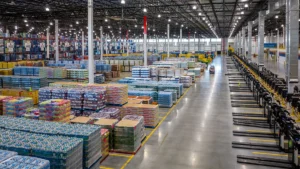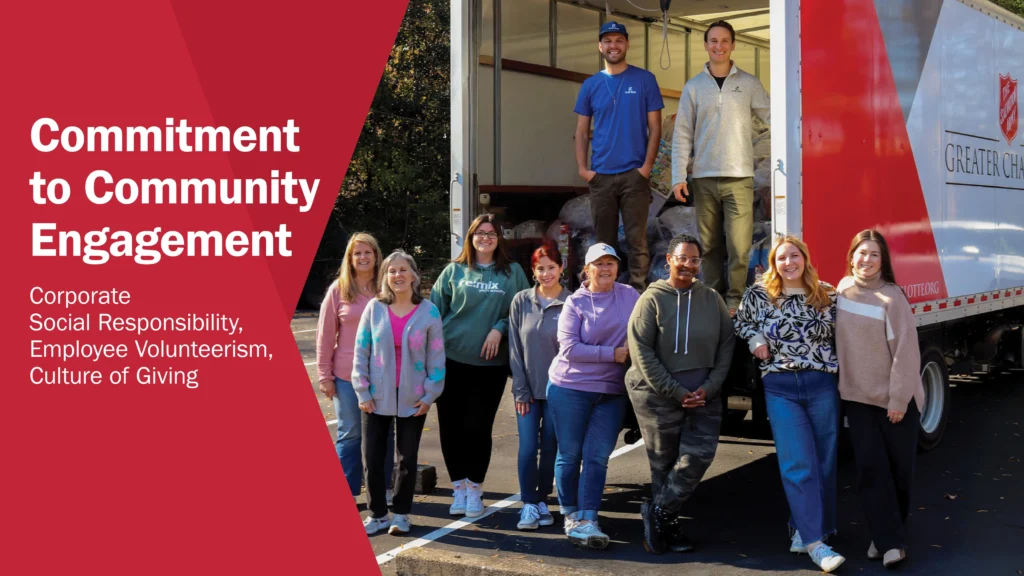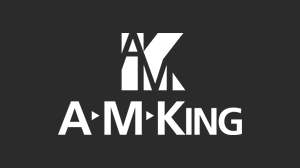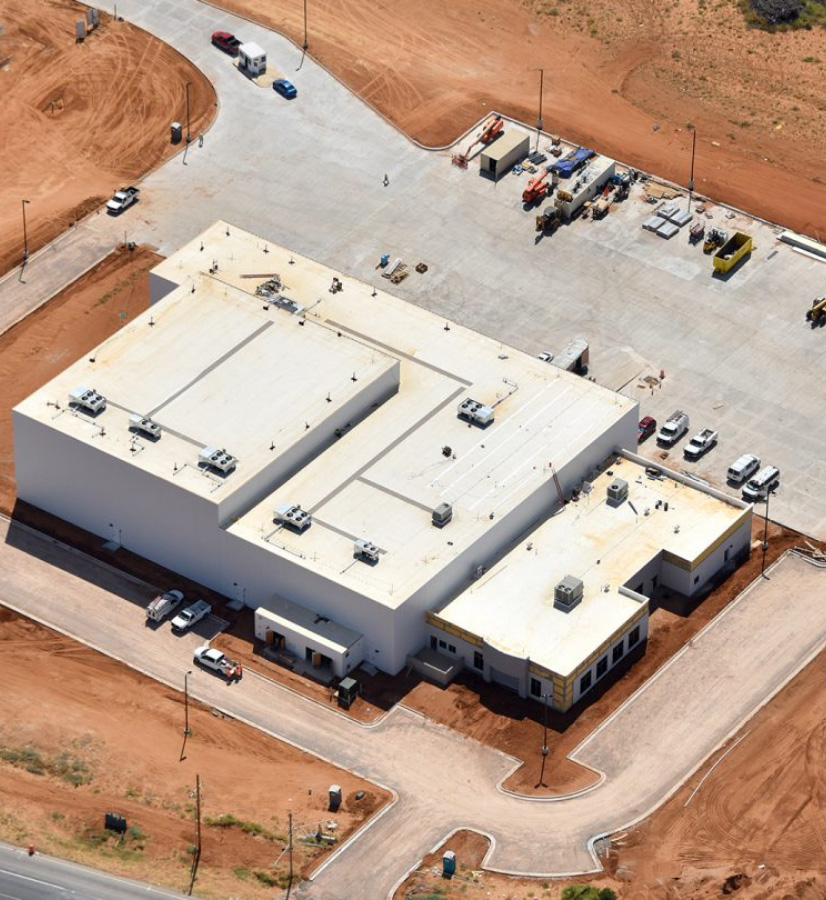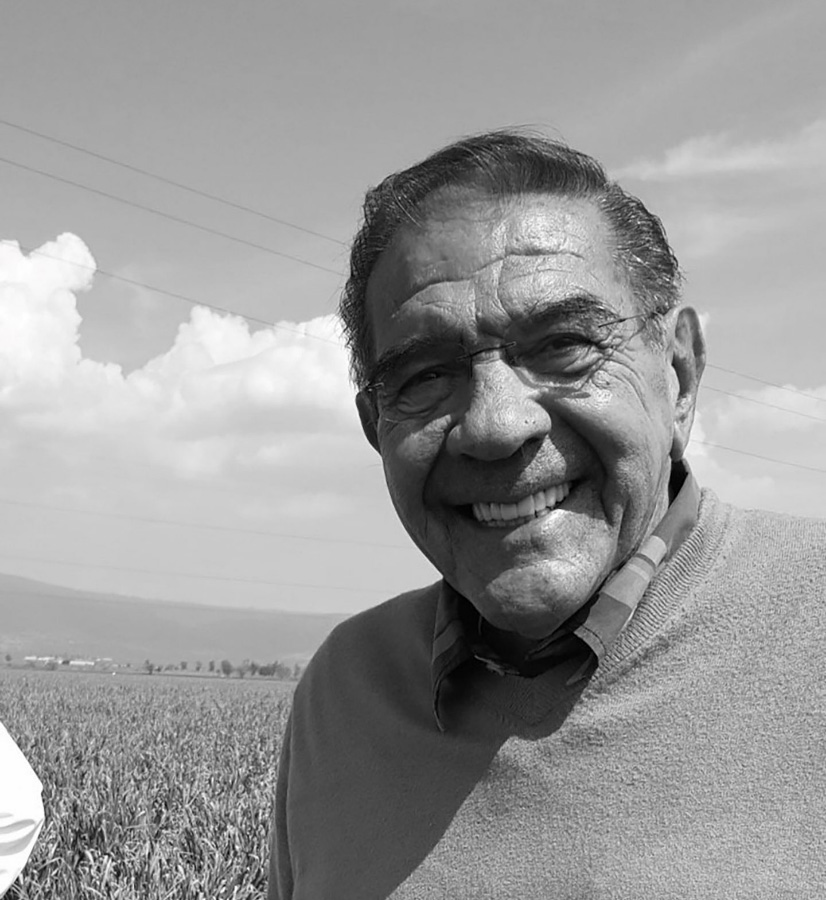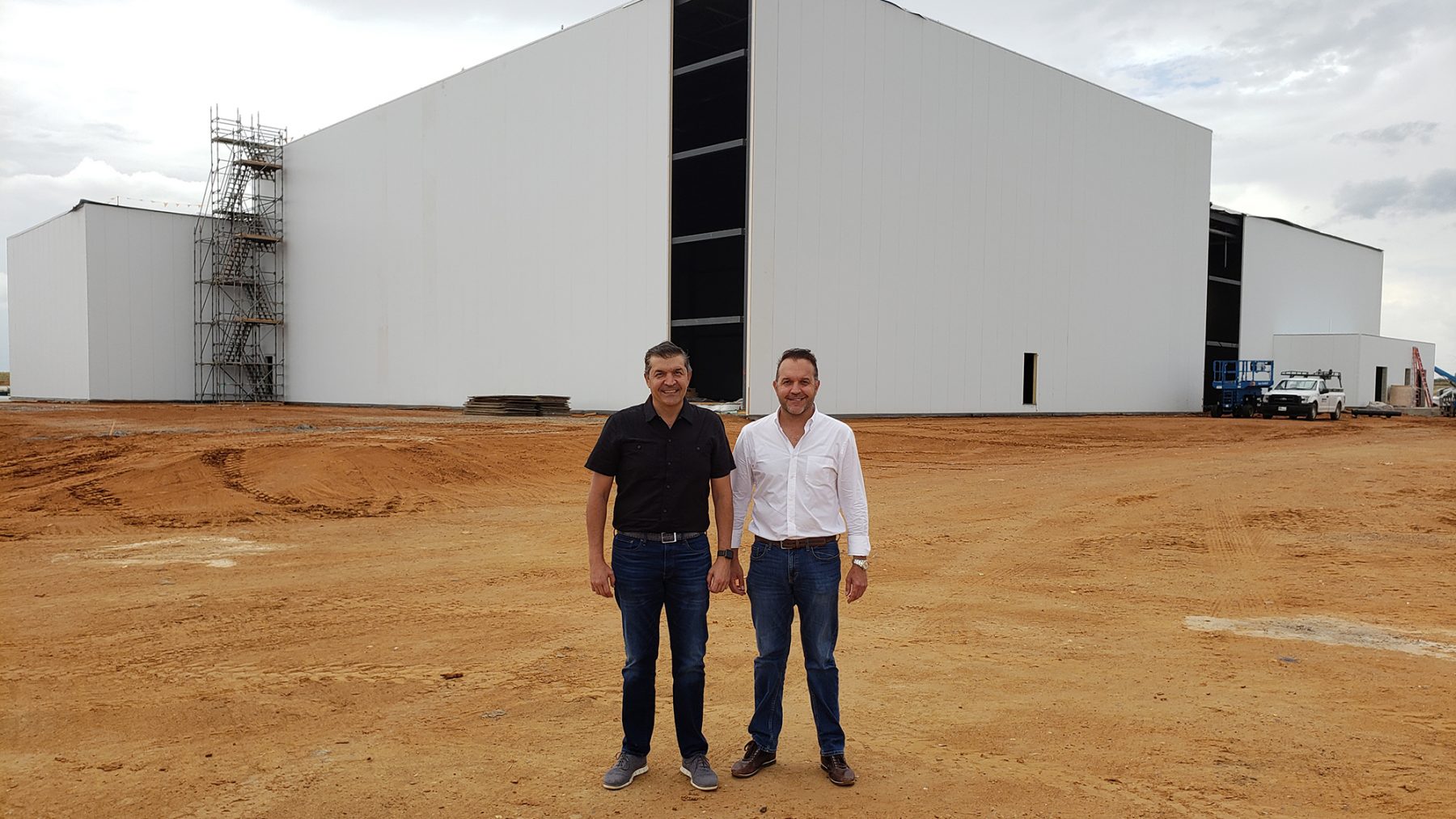
GAB Operations Leaders Talk Cold Chain, Traceability and Building a new Facility
Jaime Usabiaga and Miguel Usabiaga rarely give interviews. The president and vice president, respectively, of international produce distributor GAB Operations, LLC, are far too busy building their family business that was founded in Guanajuato, Mexico more than three decades ago. GAB, which operates under the brand names Mr. Lucky and Covemex, specializes in the production, development, marketing and distribution of fresh and frozen vegetables and fruits. Products are exported around the world via three facilities in Mexico and two in Texas.
Most of the produce coming into the U.S. has traveled through their small Laredo facility since 1996, but last year, the brothers decided to pursue a new facility to handle increased demand. They commissioned A M King to design and build a new cold storage distribution center in Laredo, scheduled to be complete next month. It’s a great partnership and now that the pandemic is loosening its grip, the A M King team was pleased to recently meet the Usabiagas in Laredo for a candid discussion about the cold chain, food safety compliance/traceability, employee welfare and, of course, the new facility.
JD Boone is not only managing construction of the project, but also stepped up as a pinch-hit reporter. The following are some excerpts from their conversation:
JD: What have been some of the challenges associated with cold storage/cold chain during your career?
Miguel: One of the biggest challenges is working with limited refrigeration capacity or poorly designed warehouses. Keeping the cold chain and improving efficiencies on cold chain management is an investment and not an expense. We have learned over the years that having a well-designed cold facility makes a big difference in efficiencies and quality of the product being handled.
JD: How did those problems impact product integrity?
Miguel: If you don’t maintain the fresh or frozen product at the proper temperature, you’re going to lose the highest level of quality. In the past, controlling the cold chain was seen as an expense, rather than an investment. What we’ve found is that every dollar that you spend on making sure you have prime refrigeration systems, premium doors and top-of-the-line equipment, makes a big difference in preserving the integrity of your products.

Pursuit of a New Facility
JD: In terms of facility design and product flow, what were your primary areas of concern and priorities you wanted to address with your new facility?
Miguel: We needed to increase cold storage capacity for fresh produce and develop a hub for our company’s U.S. and Canadian customers. A M King worked with us to ensure that the layout and flow of the space met current as well as future needs.
JD: How do you preserve product integrity as it’s arriving from Mexico?
Jaime: When the dock doors are open and the trucks are outside, there’s going to be a temperature or heat exchange right there when you are moving product.
JD: So that’s why the drive-thru application works?
Jaime: Exactly. There are two big advantages to that. One, it is the fact that you don’t lose the temperature and the other one is that you can actually seal the truck inside of the facility instead of having your people come out of the cold room to do that. That wastes time and might not be as safe as it could. Little things like that. Then, we move the produce straight into the forced air cooler.
Miguel: There will be capacity in the forced air cooler to house an entire truckload of pallets. Using dedicated fans, air is pulled through the pallets to help safely drop the temperature of the produce to prevent the development of condensation and keep the produce from prematurely ripening.
Putting Employees First
JD: What about employee welfare? It seems like you all invest in that. Look at those dorm spaces you’ve created in the new facility. Those are unique. What is your perspective on employee amenities?
Miguel: It’s difficult to find employees right now. We’re concerned about attracting employees, but also retaining our workforce. To do that we must focus on not only where they work but how they work. Are they safe? Comfortable?
Jaime: We can’t build a nice facility and have poor amenities. We need to have amenities that are safe, easy to maintain, clean and that meet the standards of the rest of facility.
Miguel: The space configuration developed with A M King supports social distancing and access control for the different users of our new facility. For example, as you mentioned JD, we’ve got a unique 16-bed trucker dormitory where our fleet drivers may rest before continuing their route. It will feature a lounge, shower/ toilet area and two exterior doors to help create a single flow through the space. It will only be accessed by fleet drivers. Dock employees will have their own breakroom/training room, lockers and toilets.
Jaime: Even the office area is set up for employee safety and comfort. The workspace design, which consists of a large open area with manager offices around its perimeter, will allow employees to social distance more easily. The open office area will have a high ceiling and open workspaces for collaboration among the employees. All the private offices will have full lite glazed doors to promote a team building environment, as well as an abundance of natural light. The space also includes a copy area, conference room and breakroom.
Javier Usabiaga (1939-2018). He was a produce industry titan dedicated to food safety and agricultural innovation; Mexico’s former national secretary of agriculture; president of Comercializadora GAB; and father to Miguel, Jaime and Javier, Jr.—who are all carrying on his legacy at the family business.
Food Safety Challenges/Solutions
JD: What are your greatest challenges you are facing related to food safety, in general, and/or specifically food safety compliance/traceability?
Miguel: We started focusing on food safety and traceability a long time ago. Fifteen years ago, we initiated internal food safety standards and set up our own documentation and traceability program. We use the latest technology in advanced irrigation systems, integrated fertigation and pest management systems to guarantee delivery of high-quality produce worldwide. It’s like having a cup of coffee in the morning. We live with it; we live by it. We want to make sure that people understand our values and standards. We invest in processes, materials, training and traceability systems. Over the last few years, we have seen a number of outbreaks and sometimes it takes weeks to be able to trace a product. This type of news isn’t ever good for our industry. We trace our products in real time, during harvest, from the field to the pallet, to the crew and, of course, to the customer or order number.
Jaime: Because we control handling of the product until it gets to the customer, we enhance its safety. We could outsource our transportation and use a third-party warehouse but then food safety isn’t consistent. What ends up happening is that you have product contamination, even if you are doing everything right at the beginning of the product’s journey.
JD: So, this new facility allows you to bring quality control in-house?
Miguel: Yes, that’s right.

Pandemic Impact
JD: The recently released 2021 Power of Produce report, published by FMI—The Food Industry Association and conducted by 210 Analytics, reports that produce department sales grew 11.4 percent in 2020 to reach $69.6 billion, and people are buying more produce than they did before the pandemic. Are you finding that to be true? How has COVID-19 impacted your company’s various markets?
Miguel: We’ve found that to be true in 2020. There was a huge spike in produce sales around all fruits and vegetables. Big retailers couldn’t keep up at first. But what we saw is that thanks to innovation, they were able to successfully handle the growth spike. In one year, they got more proficient at replenishing the shelves and distribution centers. For example, many restaurants started offering ingredients for consumers to make their own salads. That move was beneficial for us. When our customers get creative and change the way that they are doing things, we must change along with them. And every time you innovate, your business grows.
Jaime: While we saw a lot of retail growth, there was a decrease in the food service business, such as cafeterias, restaurant chains, airports.
JD: What’s your current ratio for food service versus retail?
Miguel: In fresh we’re only about 20 percent food service.
Jaime: In frozen, we’re about 60 percent. Our biggest business is industrial, people using our products as ingredients to manufacture products. So, like a soup company, a ready-to-eat meal company, prepared meals. This side of the business is definitely growing. But yes, to reiterate what Miguel said, there are things that worked during the pandemic, such as contactless ordering. All those innovations are here to stay, and we will continue to learn from them.

